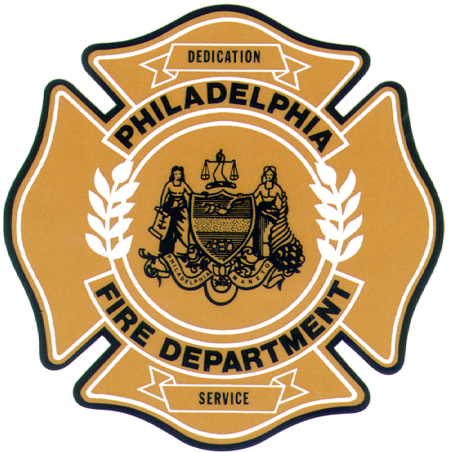Philadelphia Fire Department

The Philadelphia Fire Department provides fire protection and emergency medical services (EMS) to the city of Philadelphia. The PFD's official mission is to protect public safety by quick and professional response to emergencies and through the promotion of sound emergency prevention measures. This mandate encompasses all traditional firefighting functions, including fire suppression, with 58 engine companies and 27 ladder companies as well as specialty and support units deployed throughout the city; specialized firefighting units for Philadelphia International Airport and the Port of Philadelphia; investigations conducted by the Fire Marshal's Office to determine the origins of fires and to develop preventive strategies; prevention programs to educate the public in order to increase overall fire safety; and support services such as: research and planning, management of the Fire Communications Center within the City's 911 system, and operation of the Fire Academy. The delivery of emergency medical services now generates more than seventy percent of the department's total calls for services. Furthermore, the department's Regional Emergency Medical Services Office is responsible for regulating all public and private ambulance services within the city. Lastly, the department enforces all state and federal hazardous materials (HAZMAT) regulations within the city, and coordinates the response to such incidents. The IAFF local is 22.The PFD is the largest fire department in the Commonwealth of Pennsylvania and also has the busiest Emergency Medical Services division in the United States with a single ambulance, Medic 2, responding to 8,788 calls in 2013 and Medic 8 responded to 9,011 calls in 2018.
Excerpt from the Wikipedia article Philadelphia Fire Department (License: CC BY-SA 3.0, Authors, Images).Philadelphia Fire Department
Green Street, Philadelphia
Geographical coordinates (GPS) Address Nearby Places Show on map
Geographical coordinates (GPS)
| Latitude | Longitude |
|---|---|
| N 39.961 ° | E -75.142 ° |
Address
201 Northern Lofts Apartments
Green Street
19123 Philadelphia
Pennsylvania, United States
Open on Google Maps








